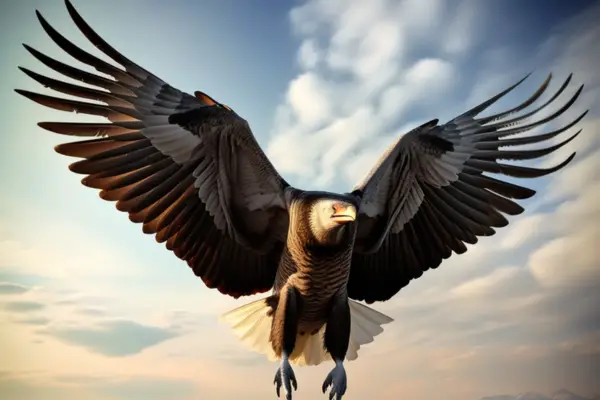Largest Flying Birds in the World
Birds come in all shapes and sizes, from tiny hummingbirds to enormous condors with wingspans wider than most people. Flight allows birds to travel long distances, find food, and escape predators.
But not all birds take to the skies with equal agility. The very largest flying birds tend to be slow and graceful gliders rather than agile flappers.
What are the biggest and most massive flying birds soaring through our skies today? Here we count down the top 10 largest flying birds by wingspan. We’ll explore what makes them unique, their habitat and range, their diet, and the major threats each faces in the wild.
#1 Wandering Albatross – 3.7 m average wingspan
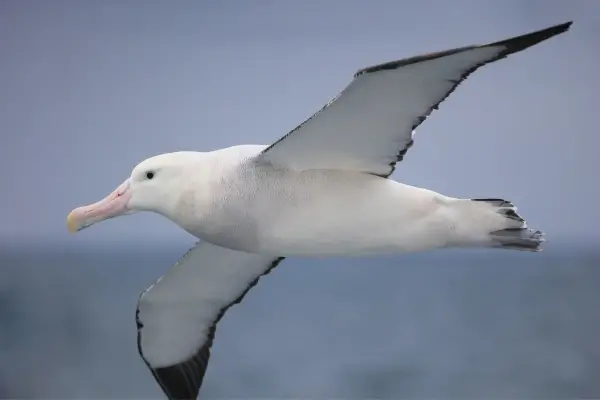
The wandering albatross (Diomedea exulans) averages the largest wingspan of any living bird, reaching up to 3.7 m (12 ft) across its iconic long, narrow wings. These majestic seabirds breed on remote subantarctic islands in the southern oceans.
They feed mainly on squid, fish, and krill and often follow fishing vessels to scavenge on bait and discards. Their immense wings allow them to glide vast distances while expending little energy, using updrafts for lift. However, longline fishing poses a major threat, with 100,000 albatross estimated to drown after getting hooked on baited lines annually.
#2 Andean Condor – 3.2 m wingspan

The Andean condor (Vultur gryphus) is South America’s largest flying bird, with an impressive wingspan up to 3.2 m (10.5 ft). As opportunistic scavenging vultures, they feast mainly on carrion often found along the Andes mountain range from Venezuela to Argentina.
Condors can spot dead animals from miles away and depend on wind currents created by the steep Andean cliffs to help lift their massive bodies into flight. Habitat loss and poisoning from feeding on carcasses killed by hunters pose threats.
#3 Dalmatian Pelican – 3.1 m wingspan

The Dalmatian pelican (Pelecanus crispus) ties for third, with some individuals reaching a maximum wingspan of 3.1 m (10 ft). The surface area of their huge beaks allows them to hold more fish than most other pelicans.
These freshwater swimmers breed in eastern Europe and Asia, wintering in the Mediterranean, India, and China. Wetland drainage along migration routes and breeding grounds poses the main threat.
#3 Great White Pelican – 3.1 m wingspan
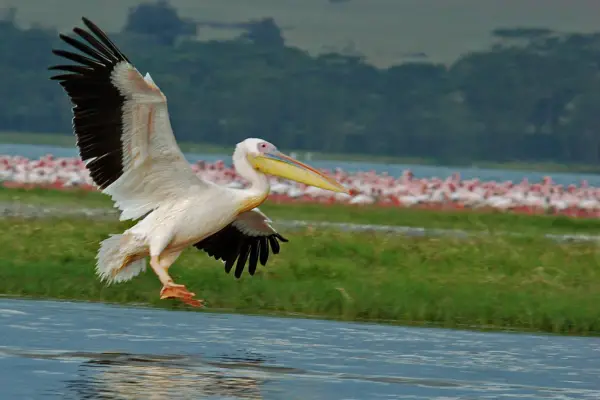
The great white pelican (Pelecanus onocrotalus) also has members extending wings up to 3.1 m (10 ft) across. They breed in swamps and lakes across Africa and southern Europe, varying their diet between fish, amphibians, and birds.
Habitat degradation reduces nesting sights and climate change shrinks wetlands used for fishing, while pollution also impacts this widespread species.
#5 Dalmatian Pelican’s Close Relative – 3.0 m wingspan
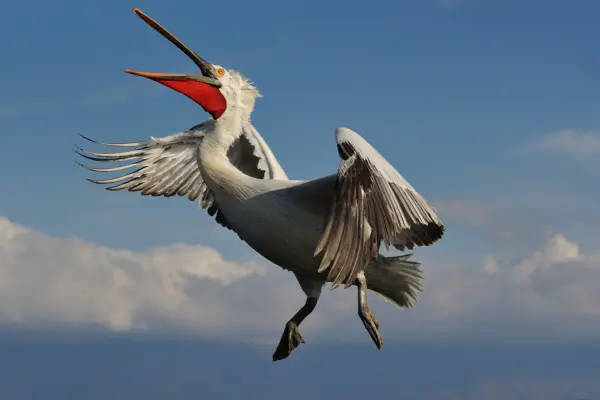
The Dalmatian pelican’s close Indian relative (Pelecanus philippensis) also makes the list, with a few outlier individuals reaching around 3 m (9.8 ft) in wingspan.
The two sister species only separate in wingspan averages by a matter of centimeters. Together, they form a supersized pair of fish-loving pelicans.
#6 Steller’s Sea Eagle – 2.8 m wingspan
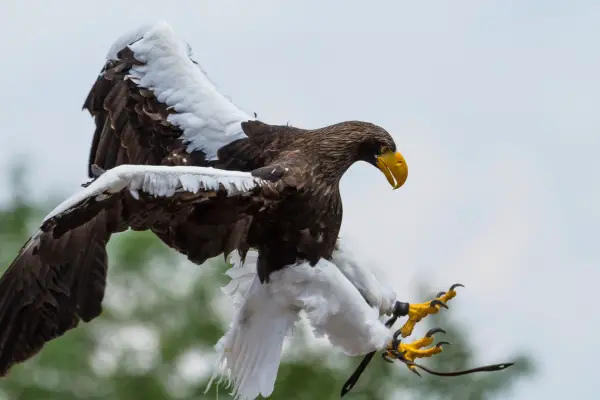
This powerful raptor rules the sky across coastal northeastern Asia, sporting a wingspan surpassing 2.8 m (9 ft). As opportunistic hunters, Steller’s sea eagles (Haliaeetus pelagicus) feed mainly on fish and seabirds, competing with endangered white-tailed sea eagles.
While global populations seem stable, threats from habitat degradation in breeding areas and pollution from chemicals like mercury carry concern.
#7 Trumpeter Swan – 2.6 m wingspan
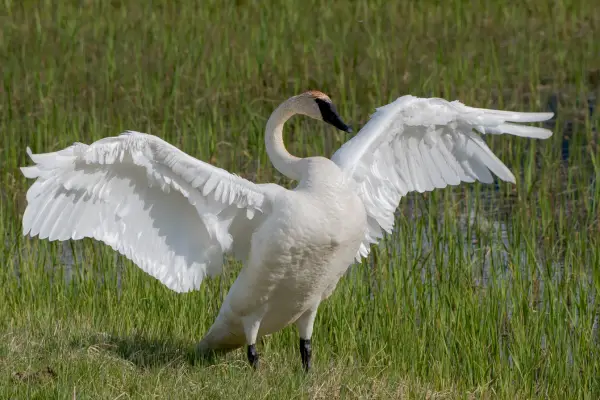
The trumpeter swan (Cygnus buccinator) measures as the largest waterfowl species, with some adults growing over 2.6 m (8.5 ft) across their wings. They migrate in noisy flocks between summer breeding lakes across North America to overwinter along the Pacific coast down into Mexico.
The global population sits around 60,000, recovering from historical hunting and habitat loss. Ongoing threats include powerline collisions, lead poisoning, and climate change impacts to wetlands.
#8 California Condor – 2.6 m wingspan
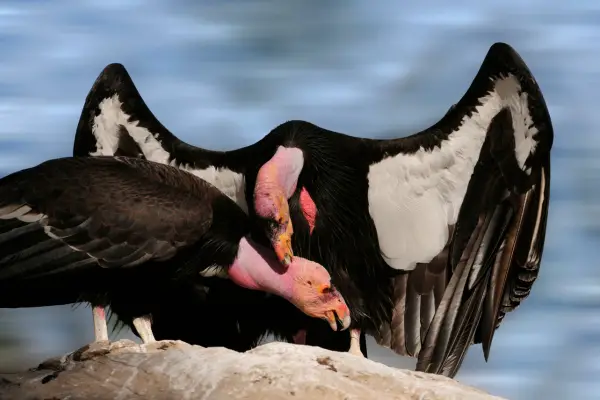
Ranking close behind trumpeter swans, California condors (Gymnogyps californianus) can achieve up to 2.6 m (8.5 ft) in wingspan. As scavenging vultures feeding on large mammal carcasses, they’re well adapted to ride air currents on their long broad wings.
Once widespread across North America, condor numbers plummeted due to habitat loss and lead poisoning from ingesting bullet fragments in carcasses. Intense conservation efforts brought California condors back from the brink of extinction, but require ongoing management of captive breeding and reintroduction.
#9 White-tailed Eagle – 2.5 m wingspan
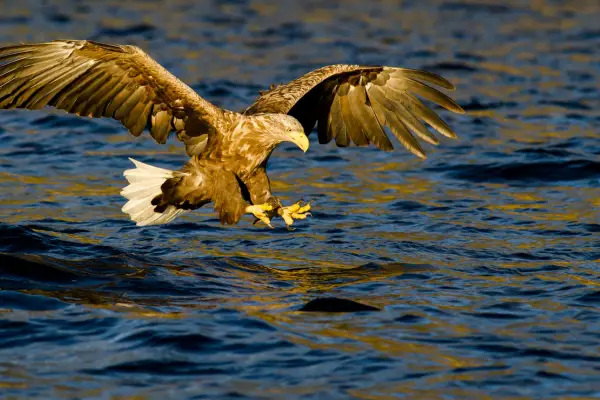
This Eurasian sea eagle species (Haliaeetus albicilla) breeds across northern Europe and Asia, spotted by its distinctive white tail and yellow beak. Wingspans average 2.45 m (8 ft), but can reach up to 2.5 m (8.2 ft).
As opportunistic predators and scavengers, their diet includes fish, birds, mammals and carrion. While populations are increasing, threats include habitat degradation, Disturbance at nest sites, pollution and reduced food availability from overfishing.
#10 Philippine Eagle – 2.3 m wingspan
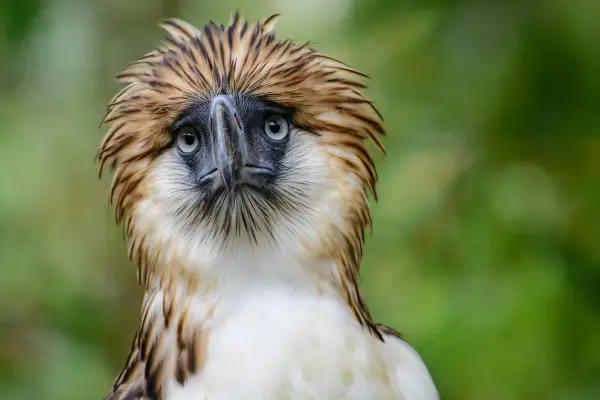
Last on our list, the Philippine eagle or monkey-eating eagle (Pithecophaga jefferyi) stands as one of the largest, most powerful raptors, with a wingspan up to 2 m (7 ft). Endemic to the Philippines, these apex predators feed mainly on monkeys, reptiles and birds.
Rampant deforestation destroyed most lowland rainforest habitat across their limited range, leaving remaining pairs struggling to breed successfully. As a conservation-reliant, critically endangered species, Philippine eagles rely on habitat protection and anti-poaching efforts to survive imminent extinction threats.
In Closing
That wraps up our countdown of the top 10 largest flying birds in the world today by wingspan. From pelicans and condors to albatrosses and eagles, these winged giants provide a glimpse of what colossal birds evolution once produced. Looking back to extinct species, the great terror bird and march of the titans topped even modern giants with estimated 3.5 m (11 ft) and 5.6 m (18.5 ft) wingspans respectively [11].
Unfortunately, threats from habitat loss to hunting may prevent today’s big birds from reaching their full soaring potential. Supporting conservation efforts can help protect the precarious future of these avian megastars.

